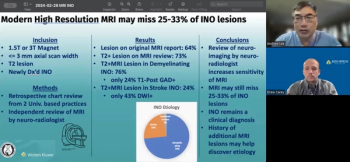
COVID-19: Should ophthalmologists prepare for a second surge?
According to the Centers for Disease Control, coronavirus cases are on the rise in at least 32 states, and many of these states are also seeing increasing hospitalizations. These numbers are raising a red flag among ophthalmologists.
As summer sets in and draws more and more Americans out of their homes and into crowded settings, healthcare officials are bracing for a potential second surge of coronavirus cases in the United States.
In early May, it seemed that the coronavirus was starting to ebb. National case counts started to level off and many states started the process of reopening.
After weeks of falling, coronavirus cases are increasing in the United States, according to data from the CDC. And while hospitalizations related to COVID-19, the disease caused by the novel coronavirus, had been steadily declining, they’ve started to climb again this week, too.
Is it a second wave, or a continuation of the first wave? A second wave of the coronavirus suggests that the first wave has come and gone, and many experts contend that has not occurred.
According to the Centers for Disease Control, coronavirus cases are on the rise in at least 32 states, and many of these states are also seeing increasing hospitalizations. By June 28, the center reported a total of 2,504,175 confirmed cases and 125,484 deaths.
According to CDC reports, Sun Belt states are seeing an increase in cases, with an unbroken chain of outbreaks reaching form South Carolina to California. Across the South and large parts of the West, cases are on the rise, hospitalizations are increasing and more and more tests are turning up positive for COVID-19.
According to Peter J. McDonnell, MD, chief medical editor of Ophthalmology Times,® and director of the Wilmer Eye Institute, Johns Hopkins University School of Medicine, Baltimore, any increase in COVID-19 cases could have an impact on ophthalmology.
“To the extent there is a substantial second wave, there is definitely the possibility (I would say probability) that ‘elective’ ophthalmology surgical procedures will be severely curtailed or banned by governors,” he explained.
Health officials caution that it is possible that the current plateau will stay on the same course over the summer, without decreasing significantly, and then spike even more this fall as
While the future is hard to predict, Uday Devgan, MD, FACS, said ophthalmologists can certainly adapt to it.
“About a month ago, we resumed elective cataract surgery and the demand has been strong with all spots in our schedule filling quickly,” said Devgan, who is in private practice at Devgan Eye Surgery in Los Angeles and Beverly Hills. He also is clinical professor of ophthalmology at the Jules Stein Eye Institute at the UCLA School of Medicine and Chief of Ophthalmology at Olive View-UCLA Medical Center.
“If there is a need to limit or stop performing elective surgical procedures for the benefit of society, will heed the advice of our experts and leaders,” he added. “We have all realized just how hard it is to balance the public health issue with the economic compression related to the coronavirus, and any solution will need to be a compromise across the board.”
Despite the uncertainty surrounding the virus, Devgan noted that is practice has seen strong demand in the past month, with all spots in the schedule filling up quickly.
“We are booked to capacity in terms of clinic consultations and surgical scheduling for at least the next 4 to 6 weeks,” he said.
Going forward, Devgan noted that if there is an increase in the spread of the virus in his community, the practice may need to reduce volume again or perhaps even close to everything except emergencies or urgent cases.
“Even if we go to zero surgical volume, the ocular disease is not going to disappear and we will still need to help these patients,” he added. “We would simply be delaying the care in situations where it is elective.”
Moreover, Devgan noted that in his practice, he is seeing a lot more patients who did not receive urgent ophthalmic care during the past few months due to the pandemic.
“They are now presenting to our clinic with more severe disease that may have been prevented with timely treatment,” he noted. “We have seen multiple cases of neo-vascular glaucoma and tractional retinal detachment from uncontrolled proliferative diabetic disease.”
Devgan noted that if these patients were treated with pan-retinal photocoagulation laser and anti-VEGF injections a few months ago, they would have less severe ophthalmic disease.
“It is important that we stratify ocular pathology into tiers and then educate our patients about urgent diseases,” he concluded. “It is acceptable to delay the cataract surgery for most patients, but those who go into angle closure glaucoma must be treated immediately.”
Elizabeth A. Davis, MD, FACS, a cornea, cataract and refractive surgeon and partner in Minnesota Eye Consultants in Bloomington, Minnesota, agreed that a surge in cases could lead to renewed restrictions.
“If COVID-19 cases continue to rise dramatically like they have in some states (CA, AZ, TX, FL), then states could reinstitute shutdowns and suspend elective surgeries,” she said.
Despite the looming threat of the coronavirus, Davis said she has seen an increase in patient visits at her practice.
“In the last few weeks both clinic and surgical volumes for our practice have been at or exceeded pre-COVID-19 levels,” she said.
Going forward, Davis said ophthalmology could face some uncertain times, given myriad unknowns surrounding the virus.
“If COVID cases continue to spike and do so in more states, then we could see shutdowns of elective surgeries again or patients fearful to proceed with surgery,” she said. “If cases plateau or subside, then I expect surgeries would proceed for people not at great risk.”
Ultimately, a second surge is something that everyone wants to avoid.
“A second surge would likely be devastating for most ophthalmology practices as well as most other businesses in general,” Davis concluded.
Newsletter
Don’t miss out—get Ophthalmology Times updates on the latest clinical advancements and expert interviews, straight to your inbox.















































